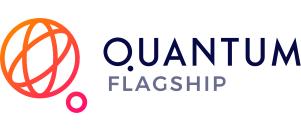


Research Fellow in Quantum Information and Quantum Optics
Research Group: Quantum Information
Supervisor: Prof Natalia Korolkova
Period: 04/2020 to 06/2021
Office: 286
Orchid: 0000-0003-3599-612X
LinkedIn: mattcthornton
Dissipation, nonlinearity, and network geometry interact in many interesting and fascinating ways. By understanding the interplay between these effects, we can design systems capable to produce highly desirable quantum states at output.
My research concerns the generation, evolution and application of non-classical states of light. A classical input (“coherent state”) can be driven towards useful quantum outputs by engineering nonlinear sources of environmental loss; this is the goal of the PhoG project. By studying the geometry of nonlinear integrated waveguide arrays, we can design a dissipation which yields either photon-number squeezing or photon-pairs; by understanding the evolution of light pulses in these devices we can optimise them for implementation.
I also strive to apply continuous-variable (CV) quantum states to quantum information processing tasks. In the CV regime, information may be encoded in the position and momentum quadratures, which measure the in-phase and out-of-phase components of the light field. Correlations between quadratures can be exploited to allow for secure encryption of a classical message, or even teleportation of a quantum state.

In March 2020 I submitted my PhD thesis, titled Agile quantum cryptography and non-classical state generation. During my PhD I focused on the use of quantum coherent states for application in quantum cryptography. Quantum Digital Signatures and Quantum State Sharing are cryptographic primitives which provide secure message authentication and secure message sharing between dishonest players. Quantum mechanics provides provable security against even the most powerful of adversaries, and communications protocols built upon the quantum coherent states promise practical ease-of-use and high sending rates when compared to other potential quantum solutions.
M. Thornton, A. Sakovich, A. Mikhalychev, J. D. Ferrer, P. de la Hoz, N. Korolkova, D. Mogilevtsev: “Generation of nonclassical light using the nonlinear-coherent-loss mechanism.” Theoretical Physics Discussion Group, University of St Andrews, November 2019, St Andrews, Scotland.
M. Thornton, H. Scott, C.Croal, N. Korolkova (2019): “Agile quantum communication: quantum signatures and quantum secrets.” QUISCO, September 2019 , St Andrews, Scotland.
M. Thornton, A. Sakovich, D. Mogilevtsev, N. Korolkova (2019): “Efficient generation of sub-Poissonian light via coherent diffusive photonics.” CEWQO 2019, Paderborn, Germany.
M. Thornton, H. Scott, C. Croal, N. Korolkova (2019): “Continuous-variable quantum digital signatures over insecure channels.” ICQOQI 2019, Minsk, Belarus.
M. Thornton, A. Sakovich, D. Mogilevtsev, N. Korolkova (2019): “Efficient generation of sub-Poissonian light via coherent diffusive photonics.” EQTC 2019, Grenoble, France.
M. Thornton, A. Sakovich, T. Doherty, D. Mogilevtsev, N. Korolkova (2018): “Efficient generation of sub-Poissonian light via coherent diffusive photonics.” Quantum Roundabout 2018, Nottingham, UK.
M. Thornton, T. Doherty, D. Mogilevtsev, N. Korolkova (2018): “Coherent quantum networks for non-classical state generation.” YAO 2018, Glasgow, UK.
M. Thornton, C. Croal, I. Khan, C. Marquardt, G. Leuchs, N. Korolkova (2018): “Gigahertz quantum signatures compatible with telecommunication technologies.” CEWQO 2018, Palma de Mallorca, Spain.
M. Thornton, C. Croal, I. Khan, C. Marquardt, G. Leuchs, N. Korolkova (2017): “Gigahertz quantum signatures compatible with telecommunication technologies.” WE-Heraeus-Seminar on “Quantum Correlations in Space and Time.”, Bad Honnef, Germany.
M. Thornton, C. Croal, I. Khan, C. Marquardt, G. Leuchs, N. Korolkova (2017): “Gigahertz quantum signatures compatible with telecommunication technologies.” QCrypt 2017, Cambridge, UK.
M. Thornton, C. Croal, I. Khan, C. Marquardt, G. Leuchs, N. Korolkova (2017): “Gigahertz quantum signatures compatible with telecommunication technologies.” CEWQO 2017, Copenhagen, Denmark.
M. Thornton, C. Croal, I. Khan, C. Marquardt, G. Leuchs, N. Korolkova (2017): “Continuous variable quantum digital signatures.” QCrypt 2016, Washington DC, USA.
Computational physics (Mathematica) demonstrator, September 2020 - December 2020.
Physics 2B tutor, February 2020 - May 2020.
Quantum phenomena, oscillations and waves, electromagnetism. This course involved a significant online-tutoring component via MS Teams.
Study-skills tutor, CAPOD, September 2017 - December 2019.
One-to-one tutorial sessions with undergraduate and taught masters students. Teaching essay writing, time management, presentation skills, scientific writing, revision techniques.
Presentation skills in Mathematics, February 2019. Designed a seminar for undergraduate mathematicians.
Computational physics (Mathematica) demonstrator, September 2018 - December 2018.
Scientific writing for High School Students, February 2018. Designed and ran a seminar for local final-year high school students.
Physics 2B tutor, February 2018 - May 2018.
Quantum phenomena, oscillations and waves, electromagnetism.
Computational physics (Mathematica) demonstrator, September 2017 - December 2017.
Physics 1B tutor, February 2017 - May 2017.
Quantum phenomena, mechanics, laser physics.



